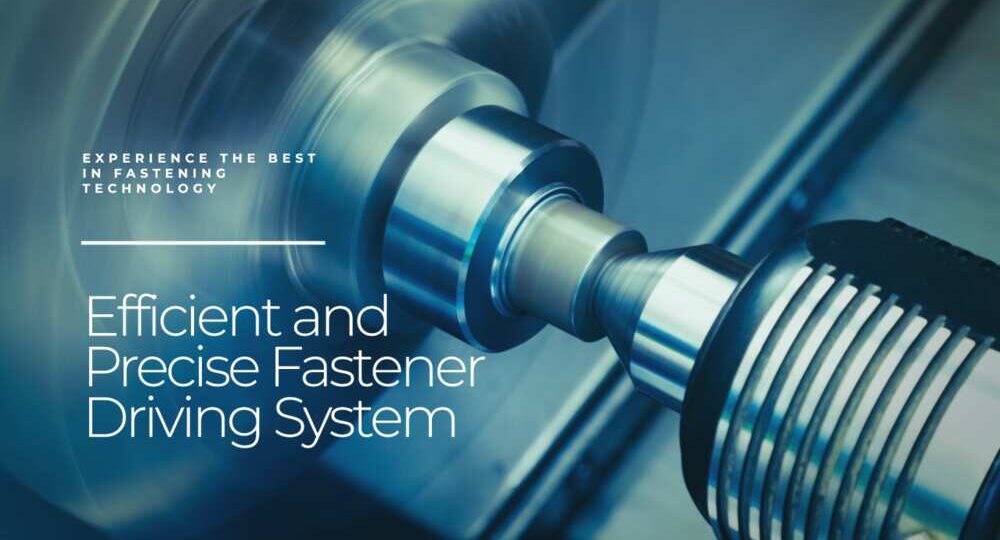Modern Innovations Driving Fastener Technology
October 11, 2025 | by IoT Development Company

In today’s home and building industries, fasteners may be small components, but they play an outsized role in structural integrity, safety, and efficiency. From advanced coatings to smart materials, modern innovations are redefining what fasteners can do—and how builders, contractors, and homeowners use them. This article explores the latest technologies driving the evolution of fasteners and how these changes are shaping the future of construction and home improvement.
1. Smarter Materials for Stronger Performance
The materials used in fasteners have evolved far beyond traditional steel and brass. Modern fasteners are being engineered for greater strength, corrosion resistance, and sustainability.
High-Performance Alloys: Manufacturers are now using alloy blends that enhance tensile strength while reducing brittleness. This means longer-lasting connections, especially in environments exposed to heavy loads or vibrations.
Stainless and Coated Fasteners: Corrosion is one of the biggest threats to long-term durability. Today’s stainless steel and zinc-aluminum coated fasteners resist rust even in coastal or high-moisture regions, extending the lifespan of decks, roofs, and structural joints.
Sustainable Alternatives: As green building standards gain traction, eco-friendly fasteners made from recycled or recyclable materials are entering the market. These not only reduce waste but also align with LEED and other environmental certifications.
2. Advanced Coatings for Durability and Efficiency
One of the most impactful areas of innovation in fastener technology is surface treatment. The right coating can dramatically increase a fastener’s lifespan while improving installation performance.
Nano-Coatings: Ultra-thin, nano-structured coatings improve corrosion resistance without adding weight or affecting threading precision. Builders appreciate these for their long-term reliability and minimal maintenance requirements.
Self-Lubricating Finishes: To streamline installation, some manufacturers now produce fasteners with dry-to-touch, low-friction coatings. This reduces the torque required during fastening, saving time and minimizing wear on tools and materials.
Colored Coatings for Aesthetics: In residential construction, appearance matters. Modern powder-coated fasteners come in a range of colors, allowing seamless blending with exterior finishes, decking boards, or roofing materials.
3. Precision Engineering and Automation
The demand for faster, safer, and more efficient installation has led to a surge in precision-engineered fasteners designed specifically for automation and consistency.
Thread Geometry Optimization: Advances in CNC and computer-aided design allow manufacturers to fine-tune thread shapes for maximum grip and minimal splitting. For wood structures, this means fewer cracks and better load distribution.
Collated and Auto-Feed Systems: Jobsite efficiency improves with fasteners designed for auto-feed screwdrivers and pneumatic tools. These systems reduce repetitive strain on workers and cut installation time dramatically—ideal for decking, framing, and drywall applications.
Smart Manufacturing: Automation and AI are entering the production line too. Machine vision systems now inspect every fastener for dimensional accuracy, ensuring builders receive consistent, high-quality products batch after batch.
4. Smart Fasteners and Connected Construction
The concept of “smart fasteners” is gaining momentum, especially in large-scale or high-value projects. These are fasteners integrated with sensors or RFID technology that can track torque, tension, or even detect loosening over time.
Load and Stress Monitoring: Embedded sensors provide real-time data on structural integrity, helping engineers predict failures before they occur. This technology is already being tested in bridges and high-rise buildings but may soon reach residential applications.
RFID and QR Code Tracking: Builders can now scan fasteners or packaging to instantly access product specs, installation guidelines, and traceability data. This ensures compliance with safety codes and simplifies quality control documentation.
5. Evolving Toward Sustainability
Fastener innovation isn’t just about strength and speed—it’s also about environmental responsibility.
Reduced Carbon Manufacturing: Manufacturers are adopting low-energy production methods, such as cold forming and electroplating alternatives, to minimize carbon output.
Reusable and Modular Systems: Some modern fastening systems allow for disassembly and reuse, supporting circular building practices and reducing waste during renovations or dismantling.
Biodegradable Fasteners: Though still emerging, biopolymer-based fasteners are being explored for temporary structures or landscape installations where eventual biodegradation is a benefit.
6. Practical Implications for Builders and Homeowners
For professionals and DIYers alike, these innovations translate into tangible benefits:
Longer-lasting builds: Improved corrosion resistance means fewer repairs and replacements.
Faster installation: Smarter designs and coatings cut down on labor time.
Better aesthetics: Color-matched and precision-finished fasteners enhance the final look of projects.
Eco-conscious choices: Sustainable options align with modern construction standards and homeowner expectations.
The Future Is Fastened with Innovation
From material science to digital technology, the fastener industry is undergoing a quiet revolution. Builders who adopt these modern solutions gain not just efficiency, but reliability and long-term value. In an era where every connection matters, the next generation of fasteners ensures that homes and buildings stand stronger, last longer, and perform better than ever before.
post by: toko baut mur
RELATED POSTS
View all



